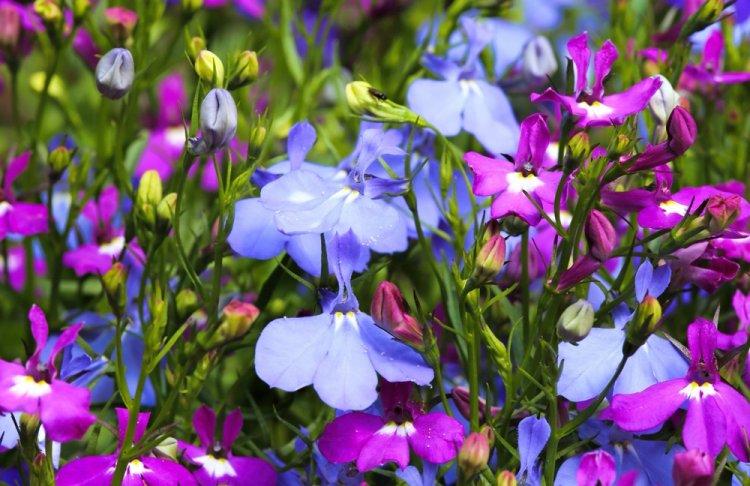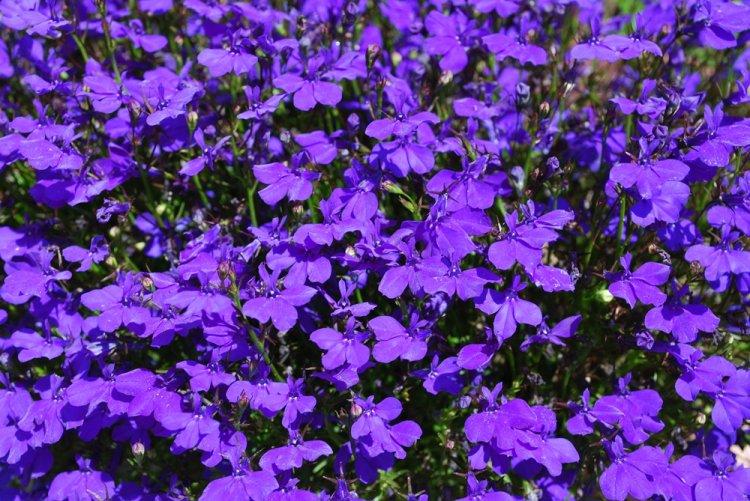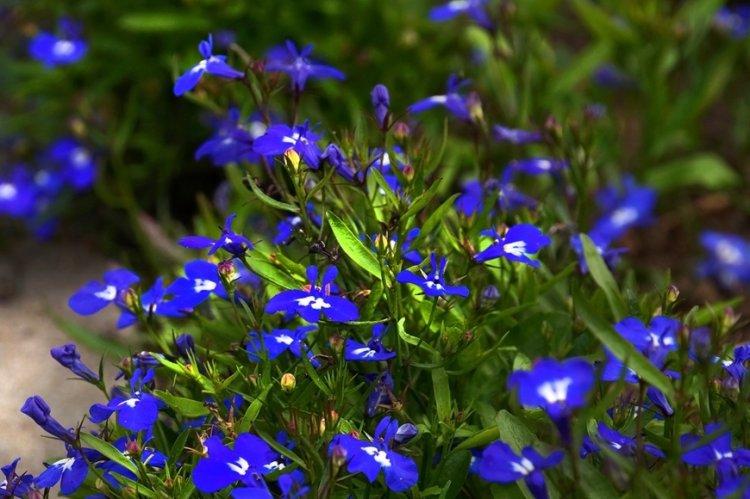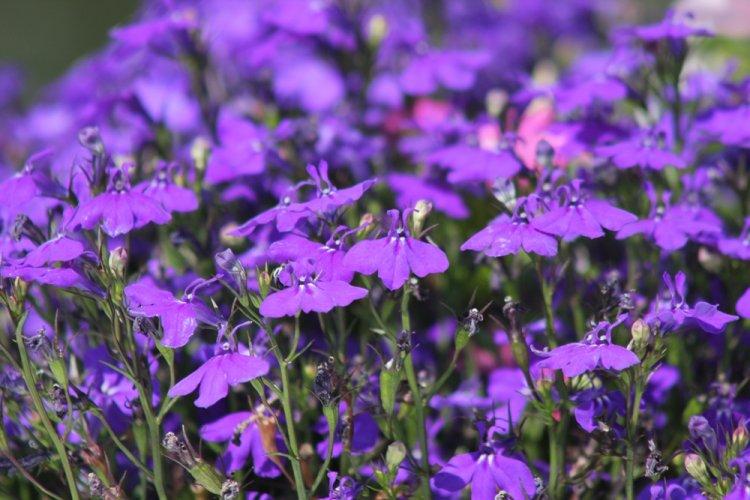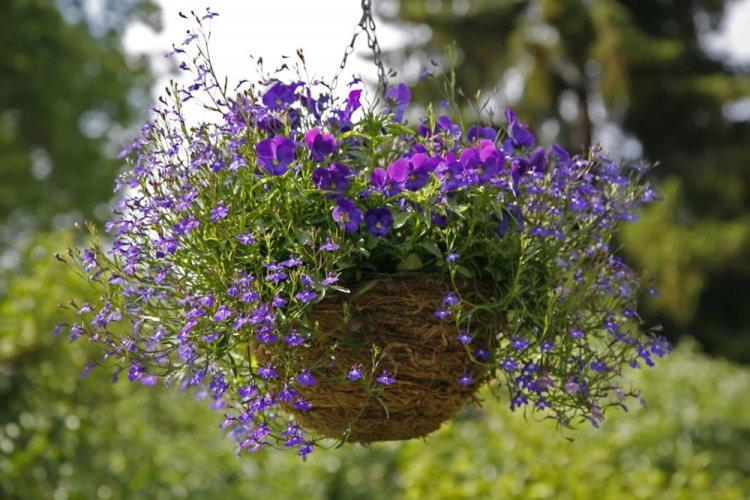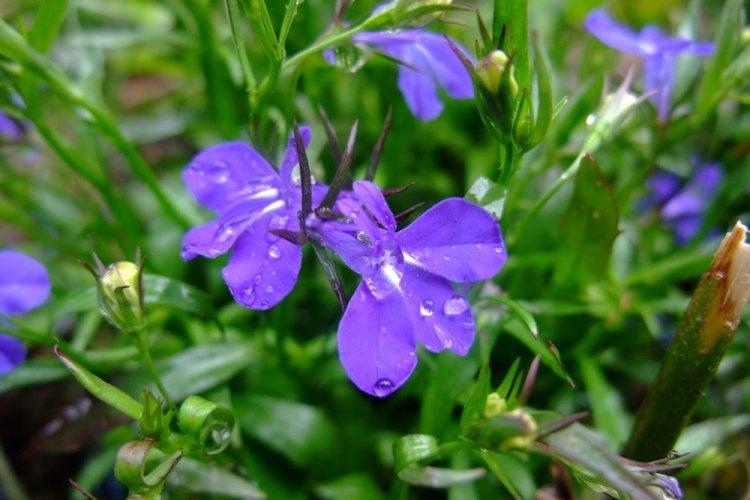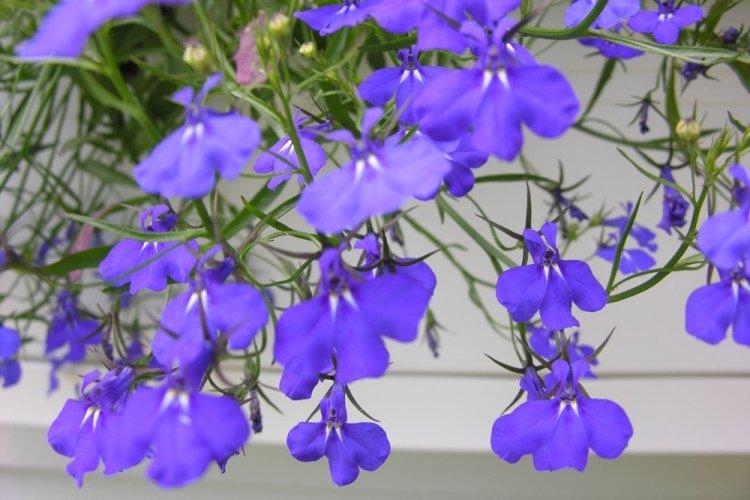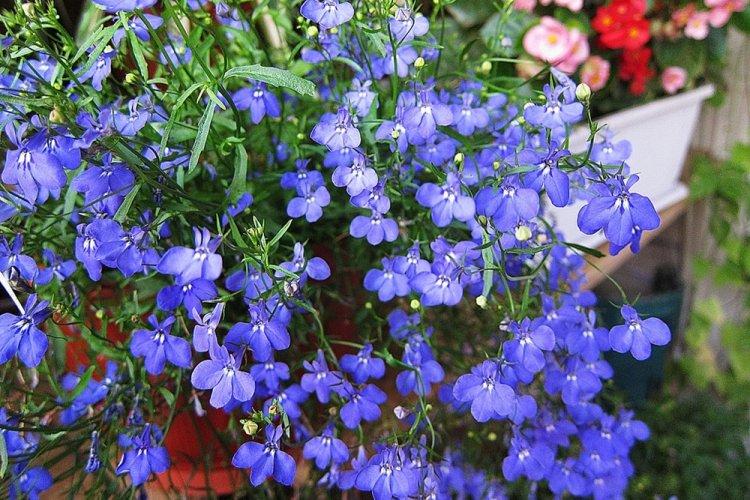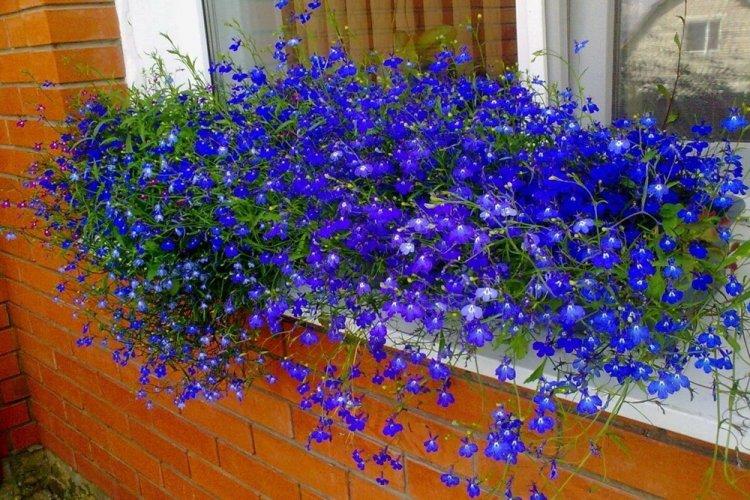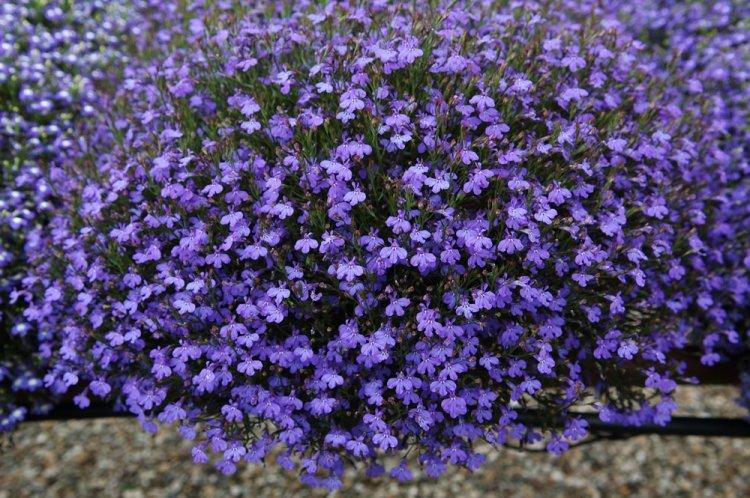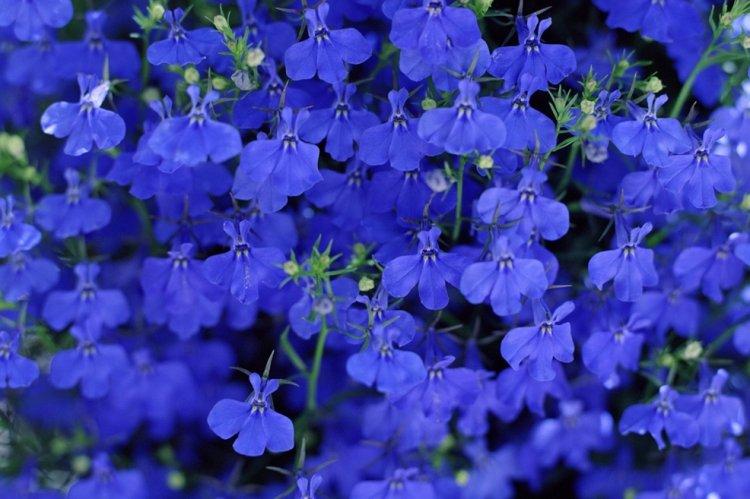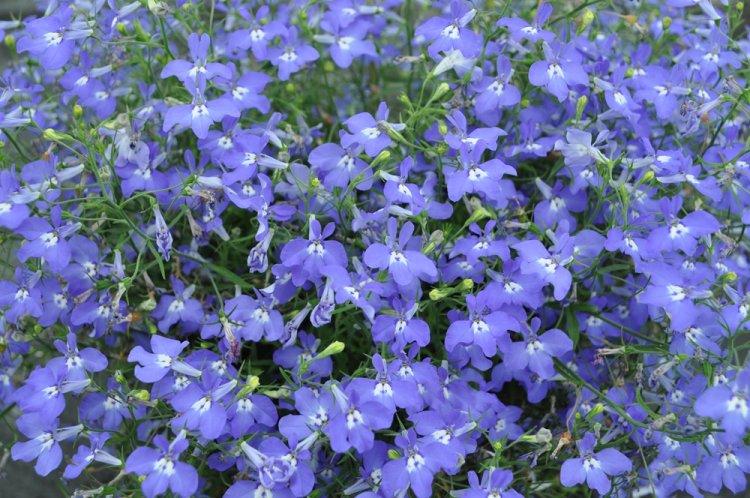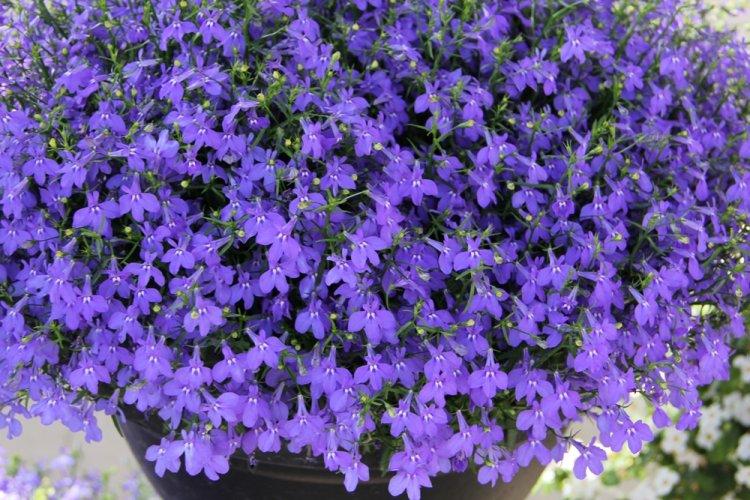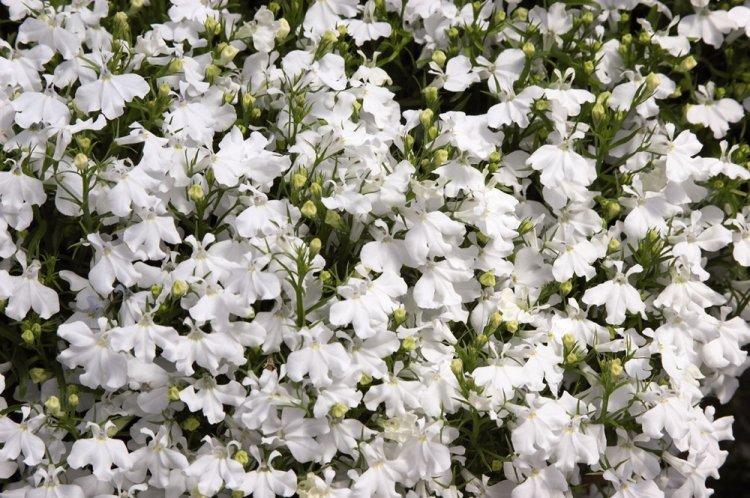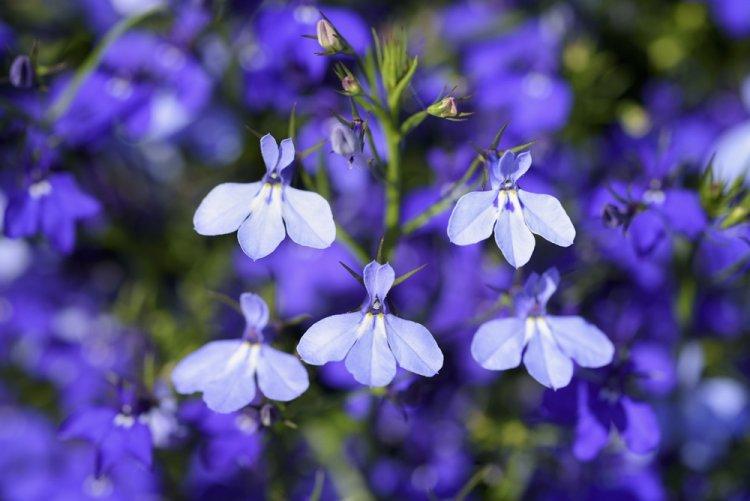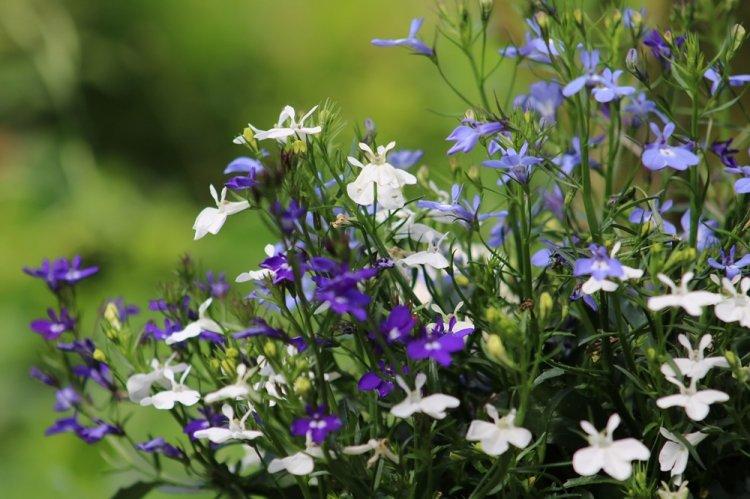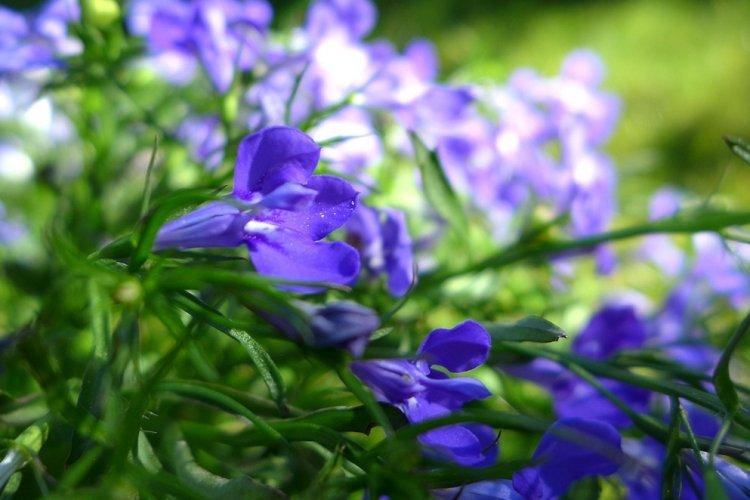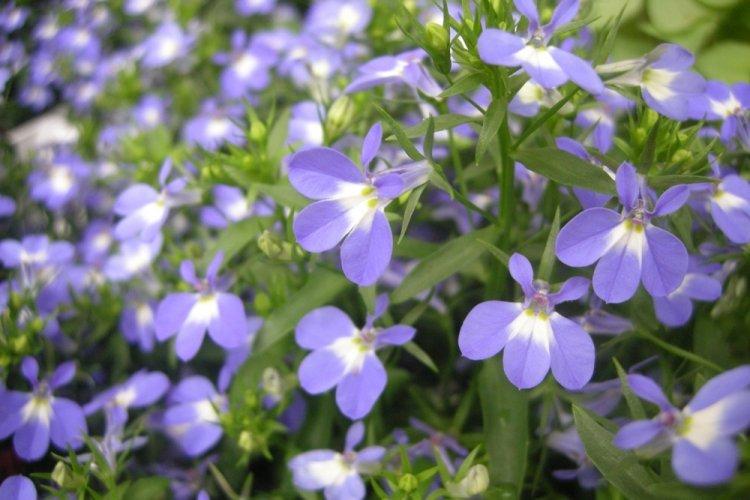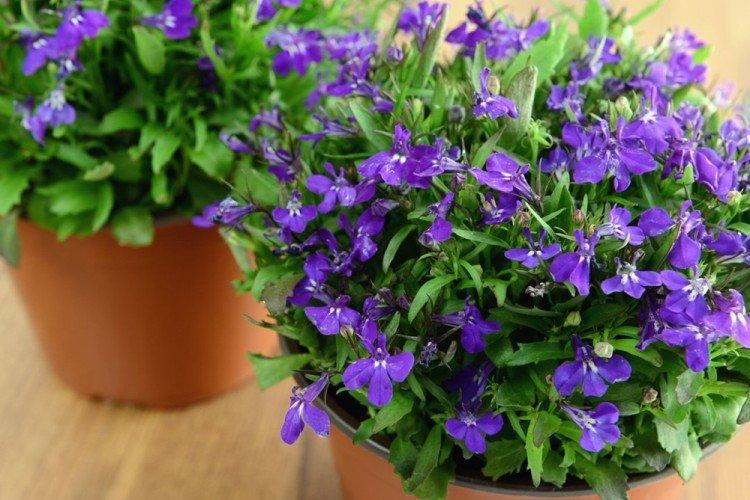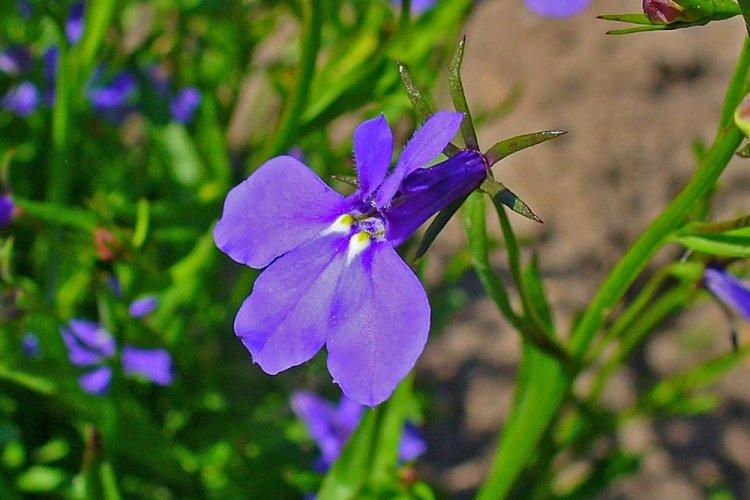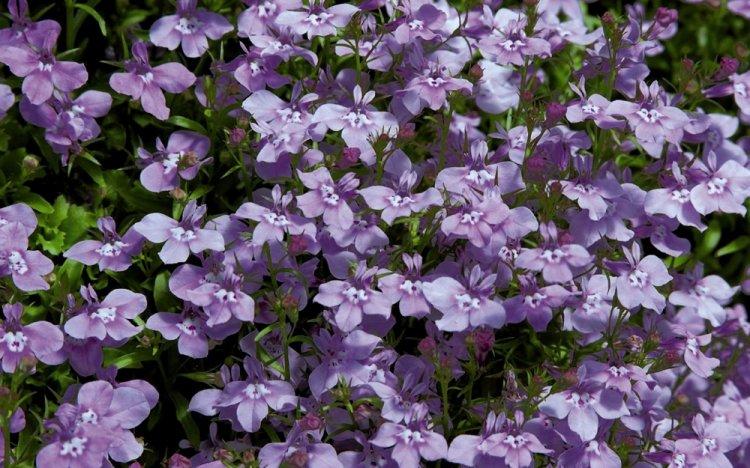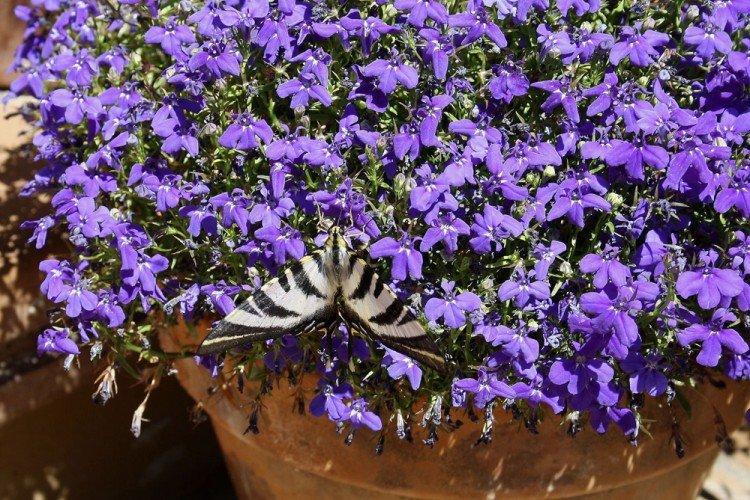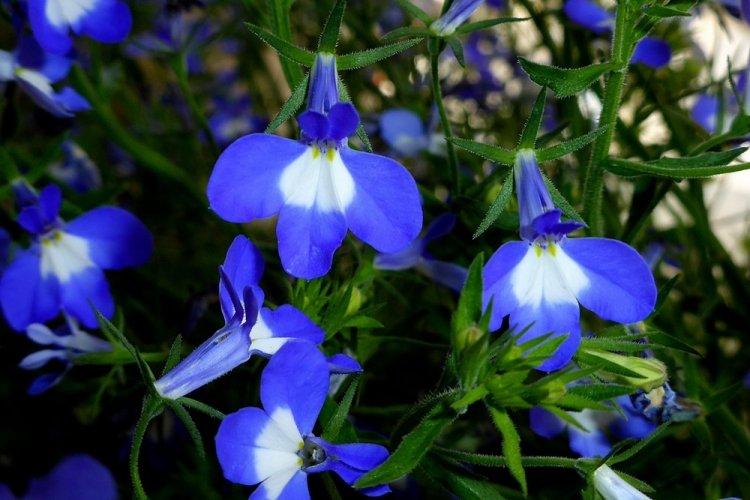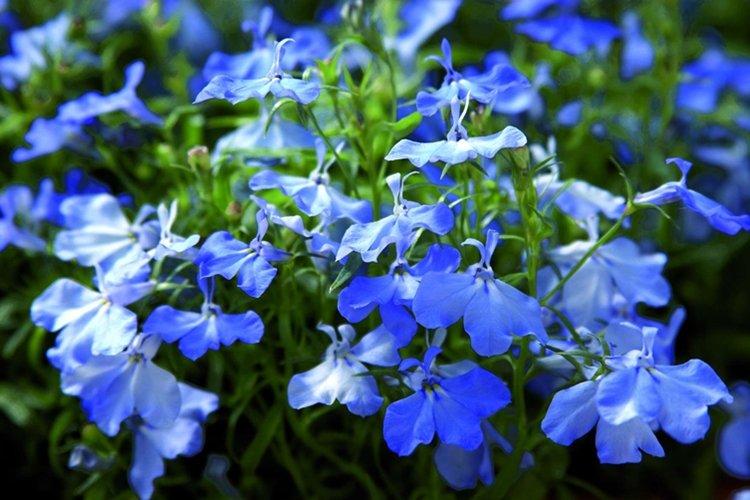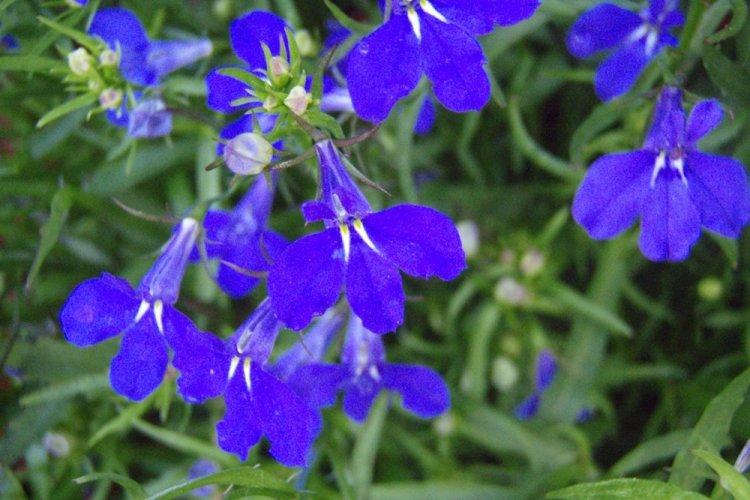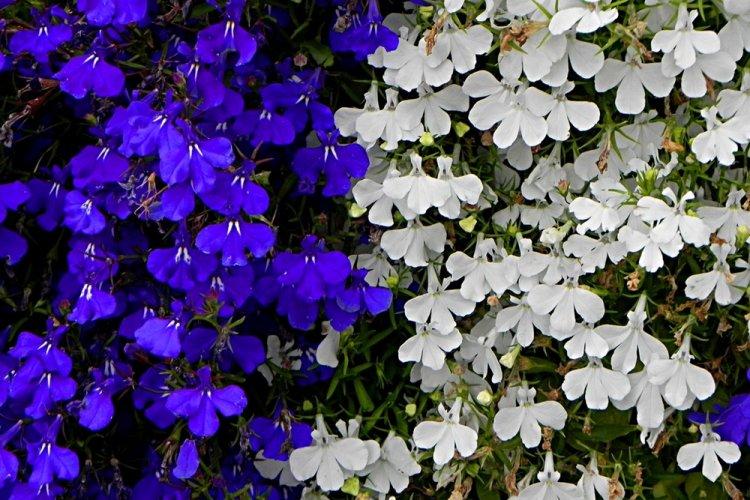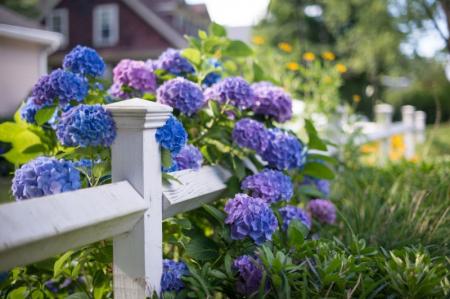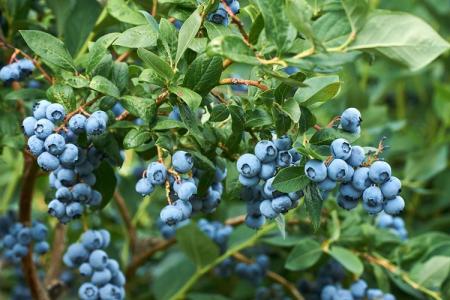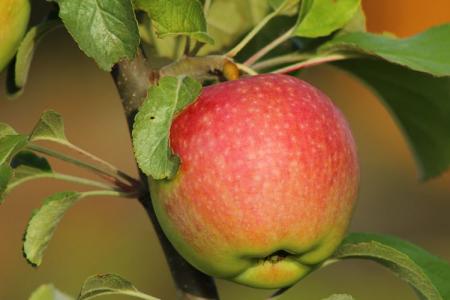
Garden lobelia amazes with its simplicity and tenderness, thanks to which it has won the hearts of thousands of flower growers. Dense bushes frame curbs or hang from planters with real waterfalls. And it is simply impossible to pass by the balcony decorated with lobelia! Here's how to achieve this effect!
general information
Outwardly, lobelia resembles something between small violets and forget-me-nots. In nature, it is an ordinary perennial, but in our latitudes it is grown in gardens as an ornamental annual plant. Most varieties are very short, with branching stems, dense foliage and an almost continuous cover of small flowers.
Lobelia rarely grows above 20 cm, and the diameter of the flowers is no more than 2 cm. In nature, there are erect stems with a height of 75-90 cm, common in water bodies. Shrubs are usually spherical or creeping - both are used for landscaping areas. Each flower has its own thin and almost weightless peduncle.
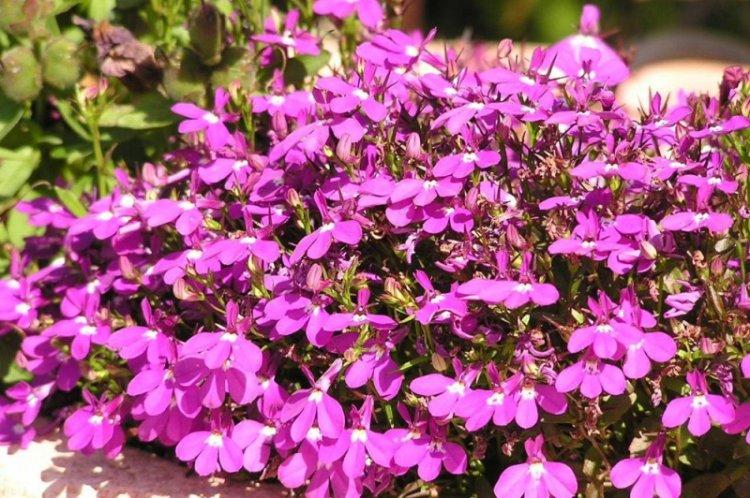
Lobelia types
Most lobelia varieties are similar to each other, which makes them look good together in the same composition. In addition to blue and blue flowers, species with white, purple or pink are sometimes found. Breeders have developed decorative hybrids with two-color petals.
Lobelia Gerardi
A very popular tall perennial, which is often found in dachas on wet soil. Tall stems grow up to one and a half meters and are densely covered with spikelets of inflorescences all summer and autumn. Lobelia Gerarda easily tolerates severe winters with frosts down to -25 - -30 degrees.
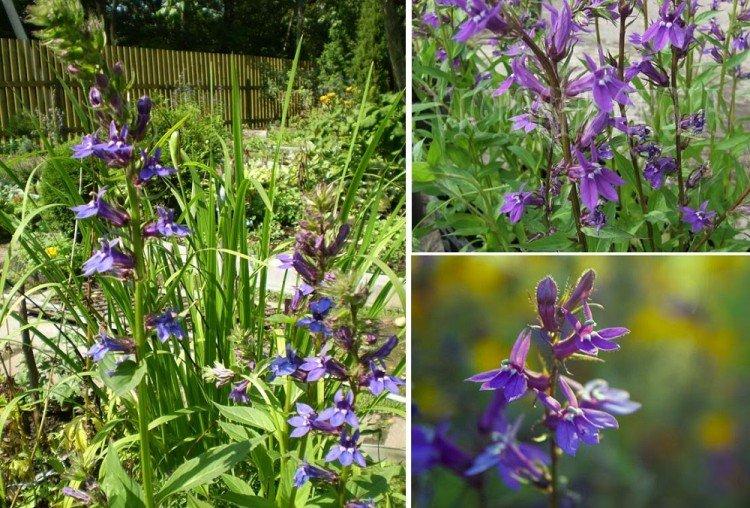
Cardinal lobelia
It is also called purple and bloody for its bright and rich shade of colors. Tall shoots stretch up to 90 cm and grow in large groups. Scarlet flowers are collected in spikelet inflorescences and look best solo, because they stand out too against the background of more neutral compositions.
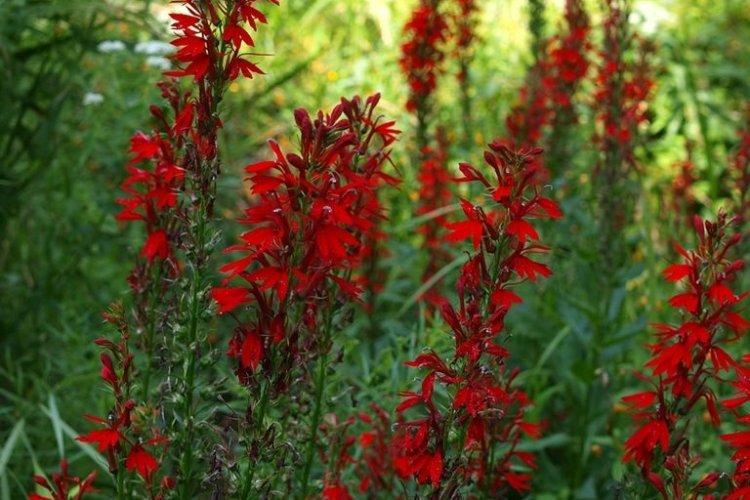
Blue lobelia
A bright and rich blue hue with a purple tint is especially appreciated in gardening. Large elastic inflorescences resemble spikelets, therefore they are suitable even for bouquets. This variety does not have such a strong root system, but it easily tolerates snowy winters.
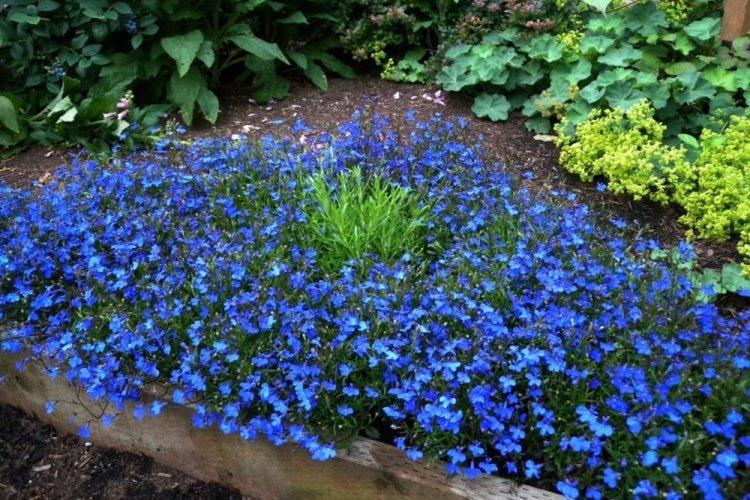
Sessile lobelia
The Far Eastern and Siberian variety loves high humidity and swampy areas. A meter-long herbaceous perennial is strewn with long thin leaves up to 7 cm in length. Rare simple flowers are collected in one-sided brushes.
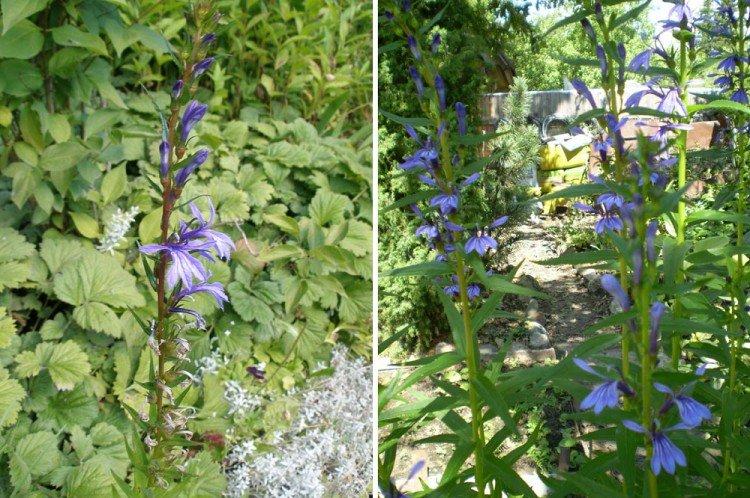
Fire lobelia
Another beautiful red variety has been called glittering lobelia. Decorative subspecies are remarkable not only for scarlet flowers, but also for burgundy leaves. Such a lobelia hibernates only in cold greenhouses, but in the season it will become a real attraction of the garden.

Lobelia Dortman
This is a rare species that is almost impossible to meet by chance, since it is listed in the Red Book. Dortman's lobelia grows in coastal areas right next to the water. Under water, at a depth of 60-80 cm, there is a root rosette, from which stems and peduncles stretch.
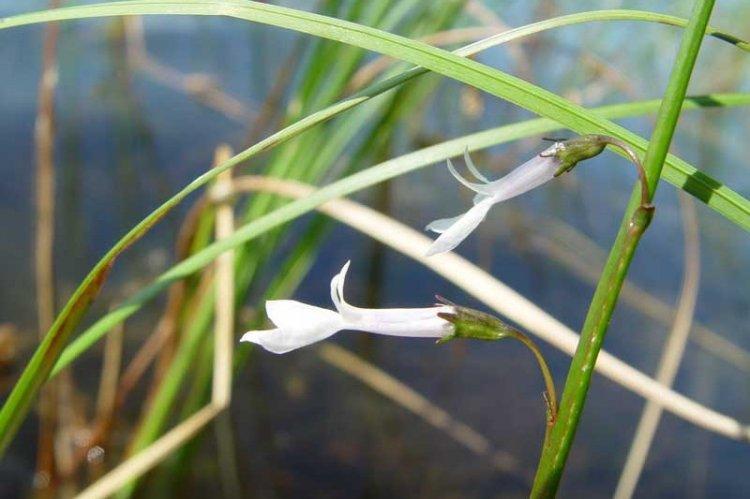
Lobelia care
Lobelia is extremely unpretentious in our latitudes, so it is suitable for novice gardeners. It does not require complicated maintenance or too much fertilization.
Temperature
Lobelia seeds germinate at temperatures of 20 degrees, or at least 18. Outdoor conditions are quite suitable for adult flowers from about the end of May. Give your seedlings time to acclimatize before planting outdoors, and often leave them on an open balcony or porch first.
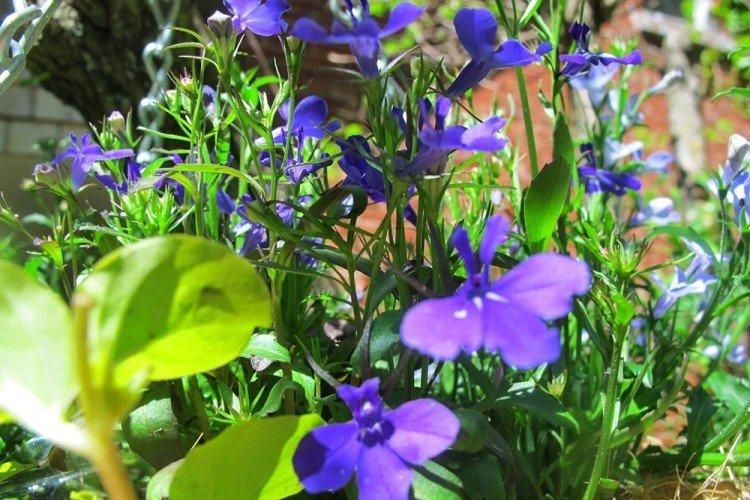
Lighting
Lobelia definitely needs a sunny or at least semi-shaded place. She feels good in almost any conditions in the yard and is not afraid of scorching rays. It is one of the most versatile plants in open and shady flower beds.
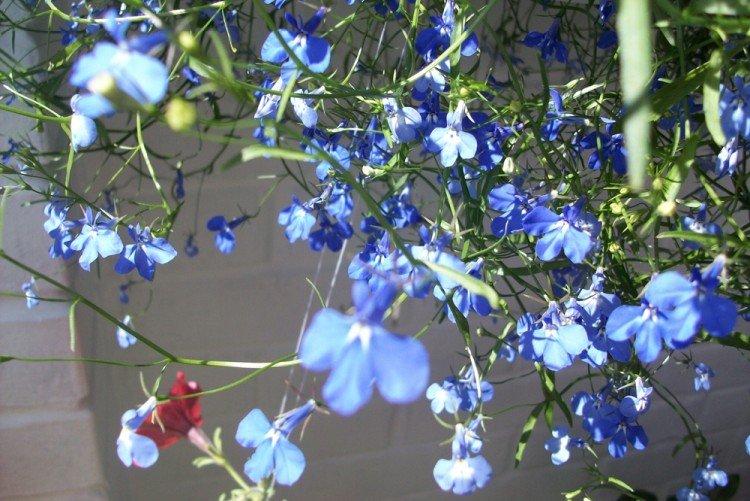
Watering
Make sure that the lobelia does not dry out, because it will be difficult to restore it later.Water it as the substrate dries and be sure to increase the frequency in the hot summer.
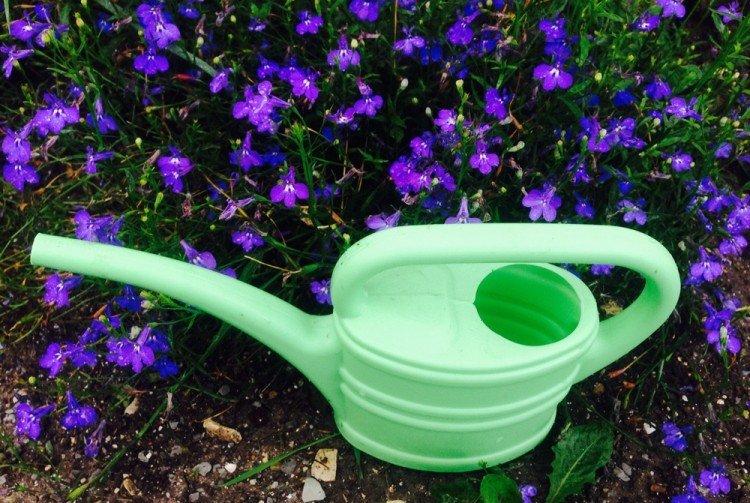
The soil
Take a classic turf and peat leaf mixture, add some compost and sand to it. Periodically, the earth was loosened so that it allowed air to pass through, and the water did not stagnate. When planting, leave a distance of 10-20 cm between the bushes, depending on the variety.
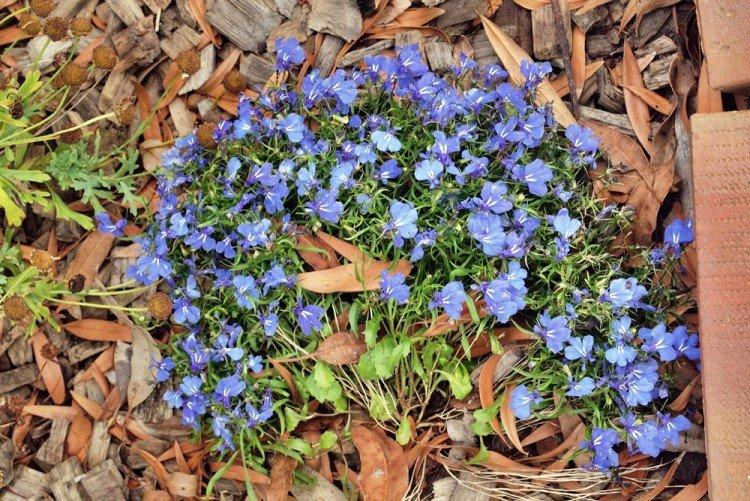
Fertilizers and feeding
Lobelia does not need to be fed too often - several times a season are enough. Use complex fertilizers with phosphorus, calcium and nitrogen. Do not overdo it with additives, otherwise the bush will begin to actively grow leaves, but it will bloom poorly.
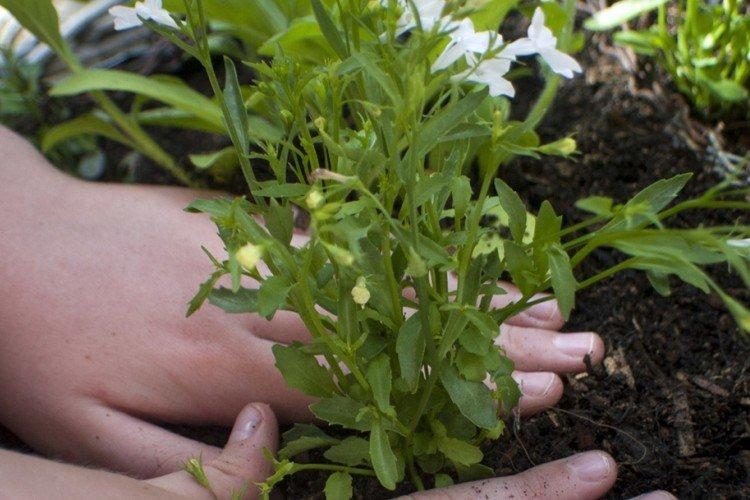
Transplant and reproduction
Lobelia has very small seeds, so it is very difficult to grow it from scratch. The optimal time for sowing is February-March, as daylight hours increase. To distribute the seeds evenly, mix them with sand or dust the soil with snow first. It is easier to use special granules, which are easier to scatter over the ground.
Lobelia rises under film or glass at temperatures above 22 degrees. The seedlings must be constantly ventilated and watered carefully so that the earth does not dry out. Dive small shoots very carefully, with a spoon and several pieces at a time.
Hybrid and ampelous varieties propagate by cuttings - it's faster and easier. Plant 2-4 plants in one hanging basket, depending on its size. If you want to keep the lobelia for the winter, carefully transplant it with an earthen clod into a pot and move it to a cool room until spring.
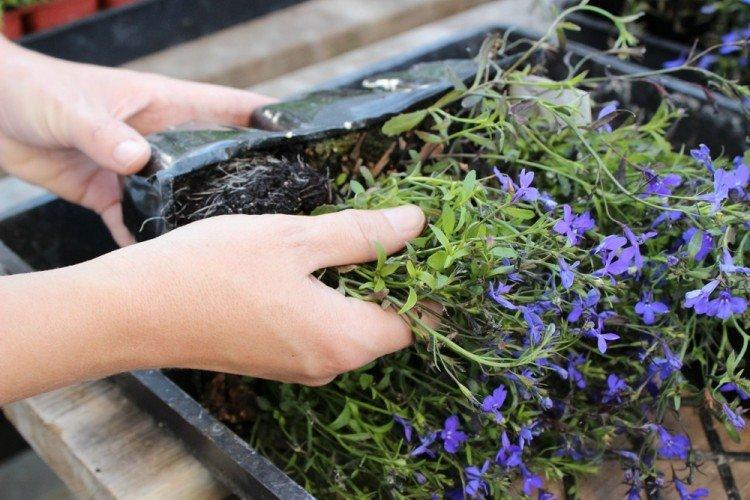
Pruning
To achieve re-flowering, lobelia needs preventive pruning in the summer. If the plant weakens and blooms worse, remove all dry shoots, and shorten too long to 5-7 cm. Literally in a week, the bush will return to its normal state and soon bloom again.
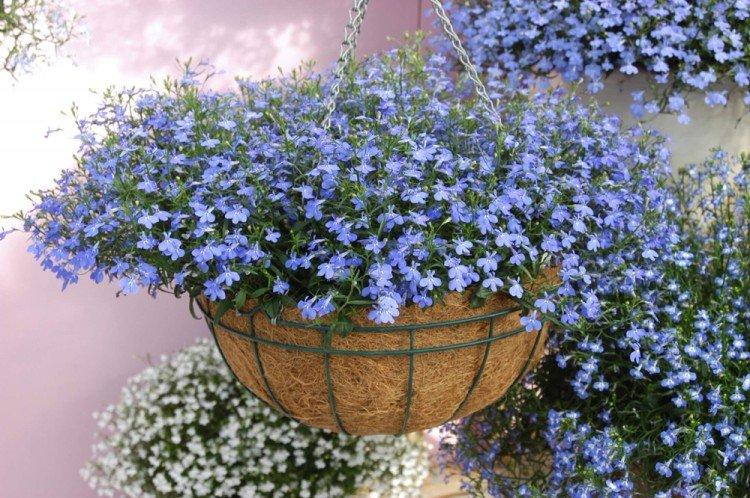
Pest and disease control
Young seedlings of lobelia are most often destroyed by a black leg, when the basal neck darkens and dies. Due to an excess of moisture, brown spots with a dusty coating appear - gray rot. In these cases, you need to remove the damaged plants, treat the rest with fungicides and adjust the care.
If light spots appear on the leaves, these are thrips that feed on the pulp of the plant. And the holes in the plates are a sure sign that slugs have looked into the garden. In this case, not only insecticides are needed, but also mechanical cleaning.
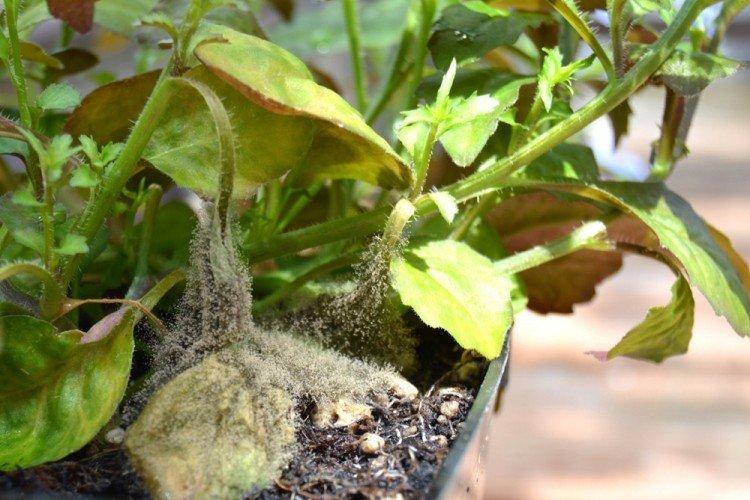
Lobelia - photo
Lobelias are equally good in carpet beds and small home flowerpots. To demonstrate this clearly, we have prepared a special photo collection for you!
